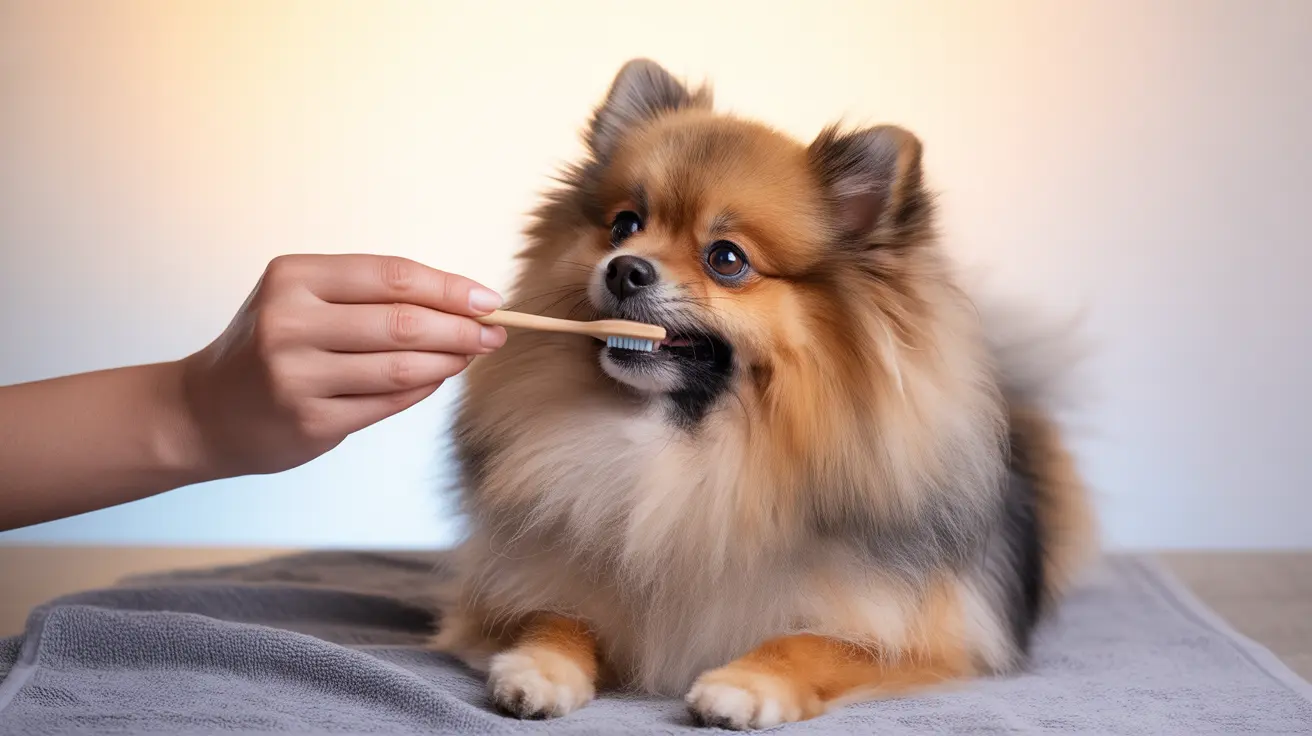As pet owners seek alternatives to traditional veterinary dental care, non anesthetic dog teeth cleaning has gained attention as a potential option. However, understanding the limitations, risks, and effectiveness of this procedure is crucial for making informed decisions about your dog's oral health.
In this comprehensive guide, we'll explore what non anesthetic dog teeth cleaning really involves, its potential impact on your pet's health, and why veterinary professionals have specific concerns about this practice.
Understanding Non Anesthetic Dog Teeth Cleaning
Non anesthetic dog teeth cleaning, also known as anesthesia-free dental cleaning, involves removing visible plaque and tartar from a dog's teeth while the animal is awake and physically restrained. The procedure typically includes scaling the visible surfaces of the teeth and sometimes a basic polishing step.
These services are often marketed as a more affordable and supposedly safer alternative to professional veterinary dental cleanings. They're commonly offered at grooming facilities, pet stores, or through mobile services.
The Limitations of Anesthesia-Free Cleanings
While the visible results might seem impressive, non anesthetic dog teeth cleaning has significant limitations. The procedure can only address surface-level buildup on the portions of teeth that are easily accessible.
Most concerning is the inability to clean below the gumline, where the majority of dental disease occurs. Without anesthesia, it's impossible to thoroughly clean these crucial areas or perform essential diagnostic procedures like dental X-rays.
Safety Concerns and Risks
The physical restraint required for non anesthetic cleaning can cause significant stress and anxiety for dogs. Even the most well-behaved pets may struggle during the procedure, increasing the risk of injury from sharp dental instruments.
Additional safety concerns include:
- Risk of tissue damage from improper technique
- Potential aspiration of water and debris
- Inability to properly manage pain if sensitive areas are encountered
- Psychological stress from prolonged restraint
The Veterinary Perspective
Major veterinary organizations, including the American Veterinary Medical Association (AVMA) and American Veterinary Dental College (AVDC), do not endorse non anesthetic dental cleanings. These organizations maintain that proper dental care requires anesthesia to ensure both effectiveness and safety.
Professional veterinary dental cleanings under anesthesia remain the gold standard because they allow for:
- Complete examination of all oral structures
- Thorough cleaning above and below the gumline
- Digital dental radiographs
- Professional assessment and treatment of dental disease
Professional Dental Care Recommendations
Rather than seeking non anesthetic alternatives, veterinarians recommend:
- Regular professional dental cleanings under anesthesia
- Daily at-home tooth brushing
- Dental-specific diets and treats approved by the Veterinary Oral Health Council
- Regular veterinary check-ups to monitor oral health
Frequently Asked Questions
What are the main differences between non-anesthetic dog teeth cleaning and professional veterinary dental cleanings under anesthesia?
Professional dental cleanings under anesthesia allow for complete oral examination, cleaning below the gumline, dental X-rays, and treatment of dental disease. Non-anesthetic cleanings only address visible surface tartar and cannot provide comprehensive dental care or disease treatment.
Can non-anesthetic dog teeth cleaning effectively prevent or treat periodontal disease?
No, non-anesthetic cleanings cannot effectively prevent or treat periodontal disease because they cannot address issues below the gumline where periodontal disease develops. Only professional cleaning under anesthesia can properly treat and prevent progression of dental disease.
What are the potential risks and dangers of non-anesthetic dental cleanings for dogs?
Risks include stress from restraint, potential injury from sharp instruments, missed diagnosis of serious dental issues, and false sense of security about dental health. There's also risk of aspiration and tissue damage during the procedure.
Why do veterinary organizations recommend anesthesia for thorough dental cleanings in dogs?
Anesthesia allows for thorough examination, proper cleaning technique, dental X-rays, and pain-free treatment of all oral issues. It ensures patient safety and enables veterinarians to provide comprehensive dental care meeting medical standards.
How often should my dog have professional dental cleanings, and can non-anesthetic cleanings be used for maintenance?
Professional dental cleanings under anesthesia are typically recommended annually, though frequency may vary based on individual needs. Non-anesthetic cleanings are not recommended for maintenance as they provide only cosmetic benefits and may mask underlying dental disease.
Conclusion
While non anesthetic dog teeth cleaning might seem appealing due to lower cost and avoidance of anesthesia, it falls short of providing the comprehensive dental care your pet needs. For optimal oral health, work with your veterinarian to develop an appropriate dental care plan that includes professional cleanings under anesthesia and proper at-home care.






